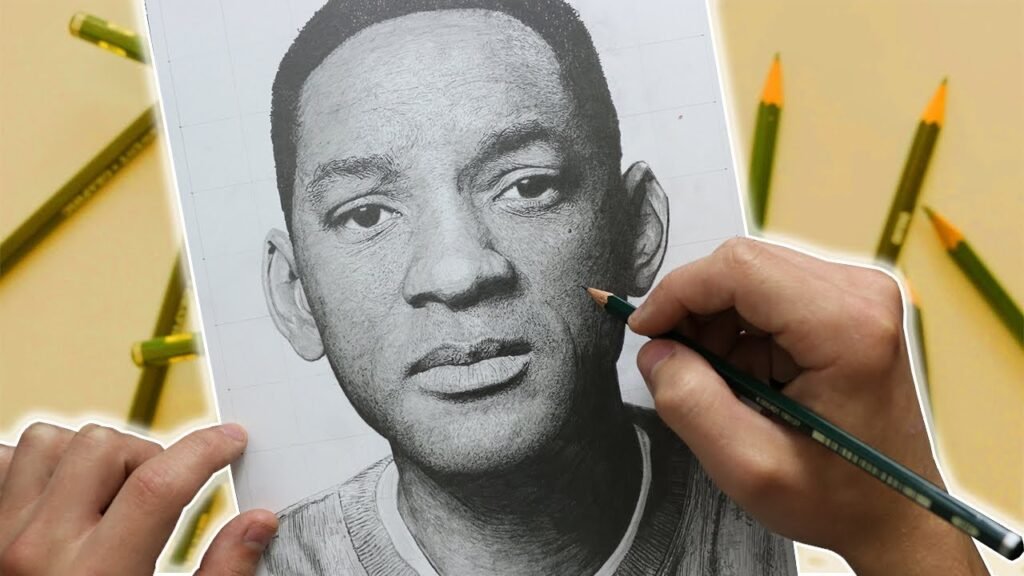Creating realistic sketches might seem hard at first, but with the right techniques, anyone can learn how to bring their drawings to life. Whether you’re a beginner or looking to improve your skills, learning how to create realistic sketches is a process that requires patience, practice, and a few helpful tips. Let’s dive into the steps that will help you achieve lifelike sketches that seem almost like photographs.
1. Start with Basic Shapes
Build a Strong Foundation
When learning how to create realistic sketches, it’s essential to begin with the basic shapes. Everything in the world can be broken down into basic shapes like circles, squares, and triangles. Start by sketching these shapes lightly and use them to guide your overall drawing.
Sketch the Main Forms
For example, if you’re drawing a person, start by sketching a basic oval for the head and rectangles for the body and limbs. This will help you understand the proportions and structure of your subject. Once the shapes are in place, you can gradually add more detail.

2. Focus on Proportions
Keep the Right Proportions
Proportions are crucial when learning how to create realistic sketches. Accurate proportions make your sketches look more lifelike and believable. Take the time to measure the size of different parts of your subject.
Measure and Compare
For example, when drawing a human face, measure the space between the eyes, nose, and mouth to ensure they are correctly placed. Comparing the sizes of different parts of the body will also help you achieve correct proportions. Don’t be afraid to erase and adjust as needed.
3. Master Shading Techniques
Adding Depth and Dimension
Shading is one of the most important aspects of realistic sketching. It creates depth and dimension, making your drawing look three-dimensional. Understanding light and shadow will help you make your sketches look more lifelike.
Learn Different Shading Styles
Use different techniques such as hatching, cross-hatching, and blending to add shadows to your sketch. Hatching involves drawing parallel lines to create texture, while cross-hatching adds depth by crossing lines at different angles. Blending smooths out areas for softer transitions.
Observe Light Sources
Pay attention to where the light is coming from when you’re sketching. The areas closest to the light should be lighter, while the areas further away will be darker. This helps create realistic lighting effects.
4. Focus on Details
The Devil is in the Details
One of the key aspects of learning how to create realistic sketches is paying attention to details. Small details such as wrinkles, texture, and reflections will bring your drawing to life.
Add Texture and Fine Details
If you’re drawing hair, for example, instead of just filling it in, draw individual strands and use shading to show the texture. If you’re sketching a tree, add the details of the bark, leaves, and branches. The more details you include, the more realistic your sketch will look.
5. Practice Observation
Learn to See Like an Artist
To master realistic sketching, it’s important to observe your subject carefully. Artists often say, “Draw what you see, not what you think you see.” This means you need to look closely at the details of your subject instead of relying on memory or imagination.
Observe from Different Angles
When practicing, try to draw from real life whenever possible. Look at your subject from different angles to understand its shape and structure. This will help you create a more accurate and realistic representation.
6. Use References
Get Inspiration from Real Images
If you’re unsure about certain details, use references like photographs or real objects to guide you. References can help you see how light, texture, and proportions work in real life.
Use a Variety of References
Use a variety of references to help with different aspects of your drawing. For example, look at close-up photos for details like skin texture or fabric folds. Having a reference will give you a clearer understanding of how to represent these elements in your sketch.
Conclusion
Learning how to create realistic sketches takes time and practice, but it’s worth the effort. By focusing on basic shapes, getting proportions right, mastering shading, adding details, and observing your subject carefully, you can create lifelike sketches. Remember to use references and keep practicing – the more you sketch, the better you will become. So grab your pencil and start sketching!

